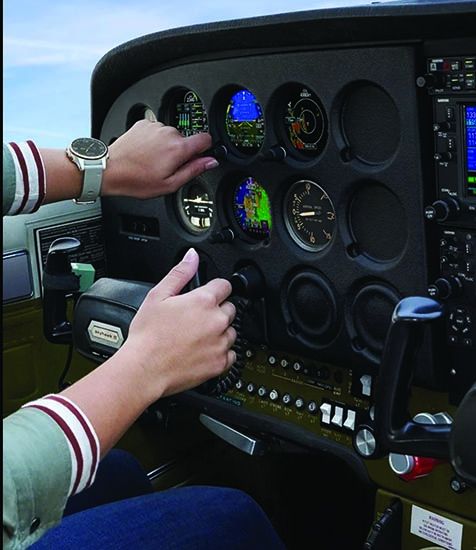Since plenty of us don’t have an endless supply of money to drop on flagship avionics upgrades, there are some utilitarian IFR solutions instead of $100K full-glass makeovers.
So we still have money left for flying, we’ll shoot for a more conservative $15,000 budget, fully aware that we’ll have to make some sacrifices. This includes a smaller-screen EFIS, a single GPS and a comm radio. For even limited budgets, it means keeping mechanical round instruments and buying used gear. On the shop floor, it means no fancy new panels—with little or no metal cutting and finishing work. Still, expect cost overruns and long scheduling.
LOGICAL IFR
To keep things simple, we’ll use the typical Piper Cherokee, Cessna Skyhawk and Beech Musketeer as examples of basic models that haven’t seen avionics upgrades in a while. We’ll use them for instrument training and personal trips in VFR and reasonable IFR conditions. We won’t be launching ahead of the jets when the weather gets really ugly.
But we will be taking them into the clag, so the avionics and supporting systems need to be reliable. To a degree, reliability is subjective. If you’re paranoid about a vacuum and/or instrument failure in IMC then you’ll be focused on electronic instruments and an all-electric interface, never having to worry about maintaining the vacuum pump, filters and lines. But you will need to keep the electrical system strong. This means maintaining a healthy battery and charging system.
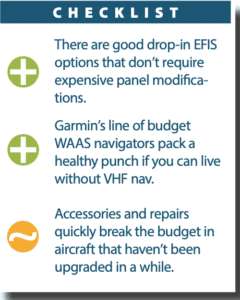
And for minding the electrics and the engine, we want a basic engine monitor that displays voltage, CHT and EGT, oil temp and pressure, plus a fuel totalizer. We’ll leave the stock fuel gauges alone, unless they’re completely useless like some we’ve flown with. In that case, the fuel senders should be removed for overhaul or replacement.
The interface should be easy to manage. That means a logical layout of flight instruments. What we mean is that older birds might need some panel rearrangement (and modification) to make a so-called standard T order of primary flight instruments. And since it’s dark at night and in the clouds, you’ll want good instrument and panel lighting. That could mean spending time and money troubleshooting instrument and avionics dimmer systems or even adding a new lighting system altogether.
MORE THAN REGS
With a plan for putting the supporting systems and accessories in place, including replacing aging comm antenna systems (new radios are useless without good ones), it’s time to pick the main equipment. Start with the FARs, where FAR 91.205 lists the basic gear for VFR and IFR, and the requirements haven’t really changed much in the gazillion years we’ve been equipping. Everyone knows you need a six-pack of basic flight instruments, and even the most basic EFIS will be so equipped.
But regs aside, venture into any IFR upgrade with a plan for backup. As just one example, since these electronic flight instruments require a valid and uncompromised pitot/static input, you’ll need a heated pitot system. Not all machines are equipped, and an iced source could mean a dreaded red X across the screen’s flight data, indicating invalid data.
And even if you retain a mechanical airspeed indicator, altimeter and VSI, the pitot/static system needs to be able to pass the required two-year FAR IFR inspections. Troubleshooting and repairing leaks in the system (quite common) can really add to the bottom line, but it’s a necessity.
Let’s go around the panel and look at some equipment choices, starting with the primary flight instruments.
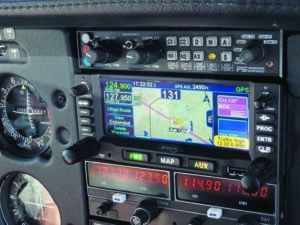
BUDGET GLASS
Shop the budget EFIS market and you’ll consider the uAvionix AV-30. At just shy of $2000 for the certified AV-30-C ($1495 for experimentals), the drop-in flight instrument packs a healthy punch in a round-gauge chassis. But there are limitations to consider, particularly when it comes to GPS and autopilot interfaces. We’ve covered the AV-30 in other articles, most recently in the June 2022 issue of Aviation Consumer.
In a nutshell, an AV-30 is we’ll capable of serving as a primary attitude instrument. In a dual installation (one as an attitude indicator and the other as an electronic heading indicator), the AI is required to be locked when used as the primary, although it does display a heading tape at the top of the display. The second AV-30 can serve as a heading indicator for IFR, but it still doesn’t have an electronic HSI that’s capable of displaying GPS (or ILS) glideslope data. That means connecting it to an WAAS IFR navigator won’t offer much in the way of approach capability for instrument approaches. We’ve seen plenty of installations where a single AV-30 was used in place of a vacuum AI, but the panel retains a traditional DG and a separate nav indicator or a mechanical HSI. The AV-30 fits a standard 3 1/8-inch round instrument cutout, so there’s no metal work required.
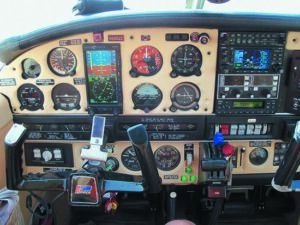
One step up in capability is a pair of Garmin G5 flight instruments. The battery-backup-equipped G5 attitude indicator is $2725 and the electronic HSI version with GPS nav interface adapter (for connecting to select VHF navs and GPS navigators) is $3675. Two G5 instruments connected together offer reversionary ADAHRS, plus a four-hour battery endurance if the electrics quit.
The 3.5-inch QVGA color LCD display-equipped G5 is aging, and it’s a no-frills instrument that doesn’t have synthetic vision or touchscreen. But it can be used in Garmin’s GFC 500 autopilot interface, and when paired with the GMU 11 external magnetometer it has a magnetic heading display. The G5 DG is equipped for instrument approaches with its electronic HSI, but is limited to VHF nav and GPS sources with digital databuses, mainly Garmin GNS 430W/530W, GTN 650/750 and Avidyne IFD navigators. The G5 can also work with Garmin’s discontinued SL30 navcomm and the current GNC 255 digital navcomm through an RS-232 serial interface. If you have a third-party autopilot (S-TEC, BendixKing and even Century and ARC/Cessna models) the G5 EHSI can provide heading command with the GAD 29B converter.
To comply with the STC, a dual G5 setup can’t replace the entire six-pack of flight instruments. They’ll replace the AI or DG or the attitude instrument can replace the rate of turn instrument. Removing the vacuum system is fair game.
A step up in tech and price is the Garmin GI 275. With a form factor that directly replaces most 3 1/8-inch round instruments, the GI 275 is aimed at incremental upgrades and not requiring cutting new metal. The instruments have a 2.69-inch diameter (active screen size) color capacitive touchscreen and an extremely flexible electrical interface potential compatible with a healthy variety of third-party equipment. They can function as a primary flight instrument, EHSI, CDI, an MFD with synthetic vision, traffic and terrain display and an engine monitor.
For basic IFR equipage, you’ll want the $3995 GI 275 ADAHRS, which is the one for use as a primary and standalone EFIS because it has the sensors for displaying all primary flight data. When used as such, however, it’s locked to display only the flight data. Synthetic vision is a $995 option and is downloadable, so you don’t have to bring it to a Garmin dealer when adding it.
As second GI 275 ADAHRS can be installed to replace a round-gauge directional gyro and it connects with a GMU 11 magnetometer for heading resolution. It can be configured as an EHSI, works with a variety of third-party nav sources and has mapping, traffic and weather overlay. A GI 275 ADAHRS with the magnetometer is priced at $4295.
For providing pitch and roll reference for driving attitude-based autopilots (including Garmin’s GFC 500), the $4995 GI 275 ADAHRS+AP is the version you’ll want. There’s also an interface where a GI 275 can function as an engine monitoring system, or Garmin EIS. We covered Garmin’s EIS/GI 275 interface in the July 2022 issue of Aviation Consumer. There’s also the $3395 GI 275 electronic CDI for displaying GPS and VHF nav course data.
Over at Aspen Avionics, the budget-priced EFIS is the Evolution E5. For IFR, it needs to be connected to an IFR panel-mounted navigator, but doesn’t require a backup attitude indicator. Its form-fit chassis fits the existing holes of mechanical attitude and heading indicators. The E5 is perhaps the largest of the budget EFIS models with its 6.0-inch diagonal Matrix LCD screen, and it has a built-in one-hour backup battery.
For autopilot and VHF nav interfacing, the E5 requires the ACU (analog converter unit), which boosts the price from $5995 to $6995. For autopilots that require pitch and roll input from an attitude indicator (BendixKing, Century/Piper), you’ll need to purchase the $2500 EA100 gyro emulator. The E5 has generous features as standard, including built-in GPS steering and a full-featured EHSI.
IFR GPS
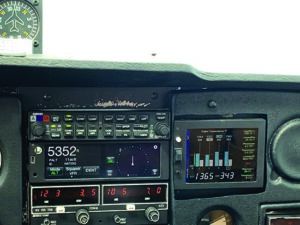
There are a wide variety of options here and we think most basic IFR panels are well-served by WAAS capability. For some, this means upgrading out of Garmin’s legacy GNS 430 non-WAAS navigator. An easy way to do that (with minimum wiring changes) is with Avidyne’s IFD440 slide-in navigator. At press time, Washington-based Avionics Source (www.avionicssource.com) was offering the IFD440 for $11,395, including trade-in value of a removed GNS 430. The IFD440, with its hybrid touch and knob feature set, has VHF comm/nav/glideslope, synthetic vision with 3D terrain and obstacles and Wi-Fi and Bluetooth connectivity. There’s also the IFD100 iPad application for a redundant display. But add EFIS to the installation and the price of the project quickly goes over the $15,000 budget.
Sacrificing VHF nav capability (no VOR, localizer or ILS) is the Garmin line of budget navigators, starting with the $5595 GPS 175. It works with all of Garmin’s flight displays and has built-in WAAS for LPV approaches, plus Flight Stream wireless capability for sending weather and traffic to a tablet computer when the navigator is connected to a Garmin GTX 345 ADS-B transponder or GDL 88 ADS-B transceiver. The $7595 GNC 355 adds a built-in VHF comm radio and the $8695 GTX 375 adds a built-in ADS-B In and Out Bluetooth transponder.
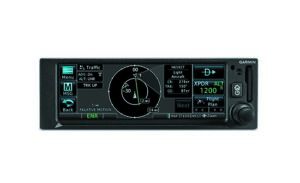
Worth mentioning is that at press time in early December 2022, Sarasota Avionics in Florida (www.sarasotavionics.com) was offering a package that includes a GNX 375, GI 275 electronic CDI, Garmin GAE 12 altitude encoder and GA 35 GPS/WAAS antenna and installation kits for $10,889. If retaining round-gauge flight instruments is your plan, but you need a WAAS navigator and ADS-B capability, this package gets it done.
A BIT ON AUTOPILOTS AND USED EQUIPMENT
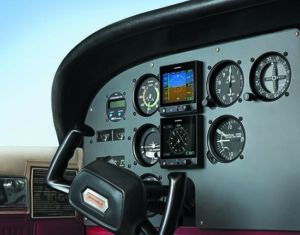
We think a functioning autopilot is required equipment for most IFR flying, and even a basic wing leveler is better than nothing. Consult with a knowledgeable shop if there’s any doubt of the status of the system in your airplane. In general, for simple single-axis systems, repairing one will in many cases be cheaper than buying a new one.
Genesys Aerosystems still sells the line of S-TEC rate-based models that have lots of STC approvals, and the entry-level System Twenty has a starting price that’s roughly $9000, before installation. BendixKing sells the AeroCruze 100 for some Cessna and Piper models, including the 172/182/177 and PA-28/32 series, to name a few. It’s priced around $6000, plus installation.
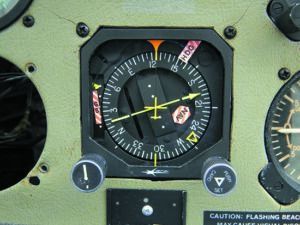
Garmin of course sells the popular GFC 500 (starting at $7870) and there’s a growing STC list that covers a wide variety of models. We’re planning an autopilot upgrade article for an upcoming issue of Aviation Consumer and we’ll dig deep into the various choices. Expect a new system to push the budget north of $20,000 when you factor in the other basic IFR systems we outline here.
As for used equipment, there’s nothing wrong with turning to a reputable seller to save at least some money on basic IFR gear. We wouldn’t expect any bargains on late-model gear, including current- production EFIS models, IFR WAAS navigators and even ADS-B equipment.
Part of the problem is that the choked supply chain has created a feeding frenzy for used late-model gear, and even for long-discontinued models like the Garmin GNS 530W and 430W WAAS navigators. The parts shortages have also boosted instrument repair businesses. Popular IFR instruments including the King KCS55A HSI/slaved compass system and Century NSD360 HSI, as two examples, might be less expensive to repair than buying a new EFIS, but think long term. Do you want to spend thousands on a teardown overhaul when the money can be put toward a solid-state instrument with far more reliability and a longer lifespan than a typical spinning gyro? We don’t.
THE BOTTOM LINE
For aircraft that haven’t seen an avionics upgrade in a while, or those that have never been equipped for IFR, a $15,000 budget for modern IFR gear is going to be difficult to achieve and nearly impossible if the aircraft needs an autopilot.
Our advice is to prioritize and even consider upgrading in stages. If the aircraft has functional round-gauge flight instruments, that could mean keeping them and putting the money into the main stack for WAAS GPS capability. Or maybe you make the switch to a single electronic attitude indicator and retain the traditional DG and save a couple thousand dollars to put toward an audio system, comm radio or engine monitor.
Last, get several proposals and bring the aircraft to the shop for a look. It’s the only way to get an accurate quote and help eliminate major budget-busting surprises once the project hits the hangar floor.
Need some help getting started? Drop us a line and we’ll include your panel in our monthly Panel Planner 101 section in Aviation Consumer.

